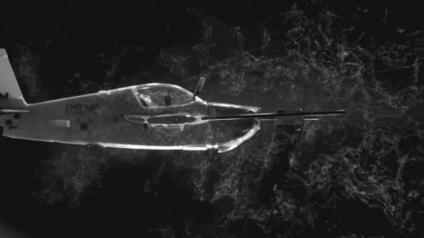"[The new] 454’s wheels feature a lumpy rim profile, called SawTooth, that Zipp claims delivers unrivaled stability in crosswinds while also improving aerodynamics. For the 454, Zipp looked to humpback whales and, specifically, the lumps on the leading edges of their pectoral fins. Called tubercles, these protrusions make humpbacks more agile by keeping water attached to their flippers when they turn. In the same way that a plane can stall when air separates from the wing during high-speed maneuvers, uncontrolled turbulence over a whale’s flipper makes turning more difficult. Tubercles keep the water attached as it flows past. Zipp says its SawTooth tubercles, which the company calls “Hyperfoils,” make deep-section rims more stable in crosswinds by forcing air to slip around and off the rims in a much more predictable manner.
Research and publish the best content.
Get Started for FREE
Sign up with Facebook Sign up with X
I don't have a Facebook or a X account
Already have an account: Login
 Your new post is loading... Your new post is loading...
 Your new post is loading... Your new post is loading...
|
Zachary12's curator insight,
November 3, 2014 4:17 PM
This is a an great idea and concept for flight similar to that comic joke that with Irish man who was the first man to fly by putting geese feather on him self. These scientist found that feather might dissipate turbulence on a plane since we have found that birds don't experience any type of turbulence. Look at Peregrine Falcon which can reach 200 mph when diving at a prey 
Brad's comment,
November 30, 2014 9:55 AM
I could see this technology being more available to small aircraft like it says, but the ability to ensure no turbulence or even a claim to even reduce turbulence in large plains is unsure. Small planes are the ones who get bounced around the most, larger aircraft are still so large I am not sure if it would be cost effective. It seems like this technology is very early. When a new technology claims it is copyiung nature it must be better, or does it? I don't see how tons of metal and steel could ever really rect like a birds wing.
Zachary12's comment,
November 30, 2014 10:03 PM
I think you right brad in fact that lager planes would not experience to much affect but the small planes might, and for copying nature I would have to say that they should look at this idea for feathers for small amount of effort for overcoming turbulence. But another maybe even better way would be a integrating more natures concepts to the wings like carbon fiber wings that might give to increase pressures or changes in jets streams. I use carbon fiber as an example is be cause it has a high tensile strength giving less likely hood to snap but this could give the once ridged wings more flexibility in flight to compensate.
|











